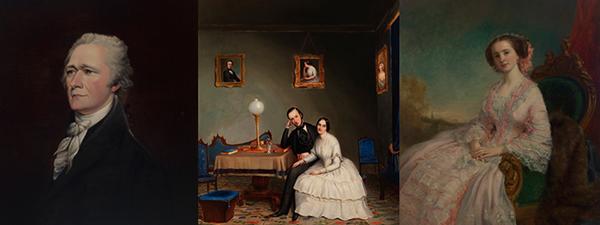History Through the Eyes of the Portrait

“Picturing Prestige: New York Portraits 1700-1860” is a current exhibition at the Museum of the City of New York which showcases artwork from three different eras of New York City.
February 8, 2016
Early American painting is often mocked as a simplistic imitation of European painting, and with some justification. It took around 200 years for the U.S. to establish the type of art institutions necessary for good work to be produced consistently. But as the country came into its own, so did its art. “Picturing Prestige: New York Portraits 1700-1860,” the new show at the Museum of the City of New York, gives a great account of this development.
The exhibit showcases the strong sense of diversity of New York. The subjects depicted are from all over Europe, varying greatly in profession if not in class. All the styles popular at the time are featured, from Rococo and Baroque to Neoclassical and Romantic.
The exhibit is divided into three rooms, each representing a different era of the city’s history. In the first, New York’s pre-revolutionary status as a British outpost is covered. Here, four paintings by John Wollaston stand out. His subjects are posed more casually than normal for the period, giving them a sense of happiness that sticks out. Most of the paintings in the exhibit are displayed alongside plaques about the lives of the subjects. Although the descriptions of the subjects are brief, every word used can elicit an emotional response from its audience. This is often touching, as when a Wollaston portrait of an ambitious young man is paired with the information that his family lost all their land after siding with the British in the revolution.
The second room spans from the beginning of the Revolutionary War until 1815. As America became an independent nation, patriotic work celebrating its military victories was in high demand. Some paintings within this time period will be instantly recognizable, such as portraits of George Washington and Andrew Hamilton later used on the one and 10 dollar bills, respectively. The portrait of Hamilton, by John Trumbull, stands next to one of his wife by Ralph Earl, and they stand out as the highpoint of the exhibit. Trumbull depicts Hamilton against a stark black background from which he emerges as a strong, resolute leader. His wife is shown in a beautiful, lavish style emphasizing her extremely colorful dress. It is a clever choice on the part of the museum exhibiting the two portraits beside one another.
The third room is of the paintings from 1815 to 1860. Here, the French influence is very clear. Several portraits of military officers resemble those that Gros did of Napoleon. A number of portraits of the Brooks Brothers founders shows that those depicted in the exhibit helped establish institutions that we still live with today.
“Picturing Prestige: New York Portraits, 1700-1860” is on display at the Museum of the City of New York.
A version of this article appeared in the Feb. 8th print edition. Email Tony Schwab at [email protected].























































































































































